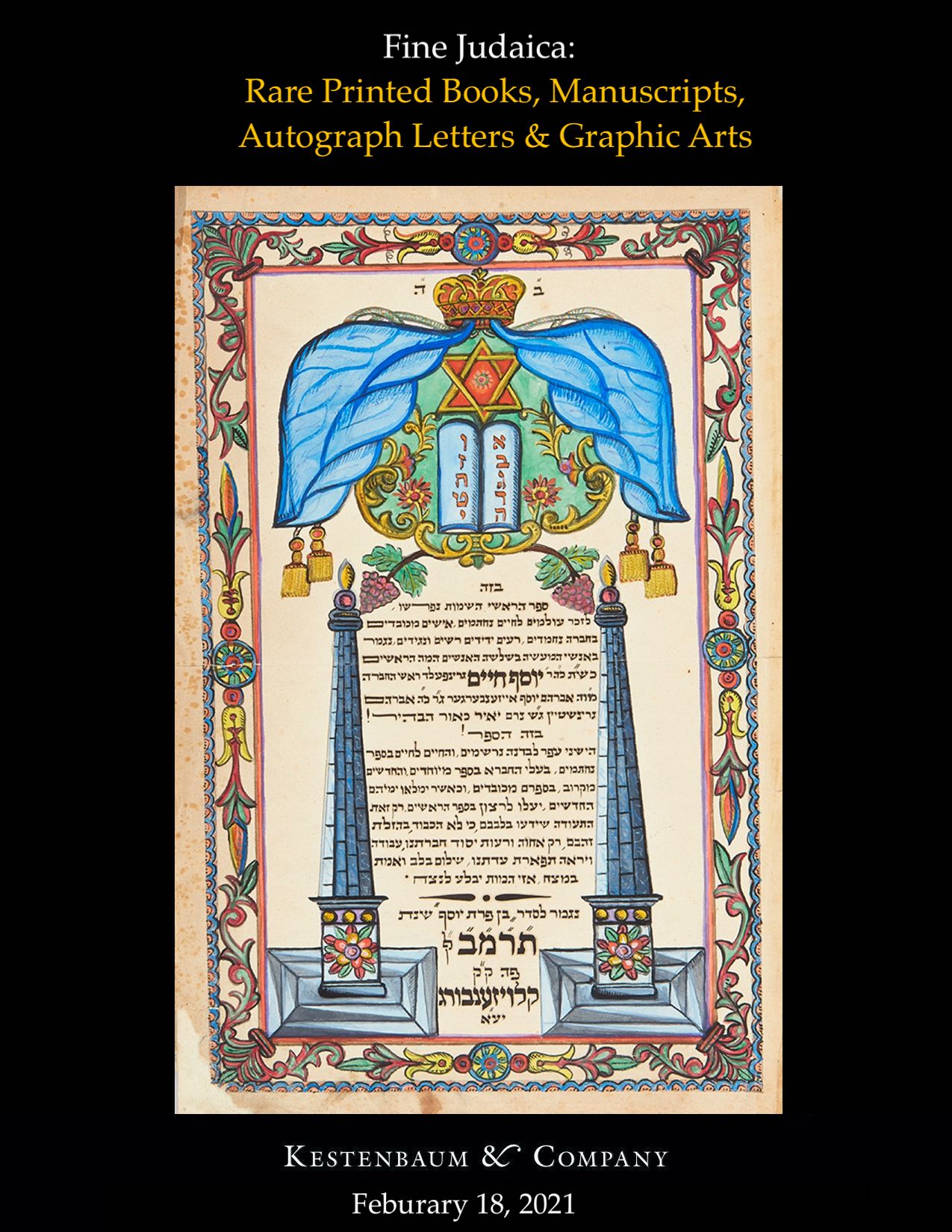Dom Luís de Melo. Sermoens.

Auction 92 |
Thursday, February 18th,
2021 at 1:00pm
Fine Judaica: Rare Printed Books, Manuscripts, Autograph Letters & Graphic Arts
Lot 214
(INQUISITION).
Dom Luís de Melo. Sermoens.
Lisbon: Iorge Rodriguez 1637
Est: $500 - $700
PRICE REALIZED $250
Contains two Auto de Fé sermons by the Lisbon Inquisitor Dom Luís de Melo.
The first, from 11th October, 1637 at Ribeira Velha de Lisboa, where five New Christians were sentenced to death by fire: João de Siqueira, Diogo Machado, Maria Rodrigues, Isabel Ulhôa and Antónia Mendes.
The second sermon, from 16th January, 1636 at Lisbon’s Santa Engracia, was in commemoration of memory of the Profanation of Santa Engracia, which took place on 15-16 january of 1630, and lead to a violent wave of persucution against New Christians all over the reign:
"The intensification of the Portuguese Inquisition's opposition to the Spanish Crown was accompanied by new cases based on allegations of sacrilege. A laconic entry in a Portuguese archival register tells one such story:
“Sacrilege committed in the Church of Santa Engrácia of Lisbon during the night of January 15 to 16 and a theft of the Most Holy Sacrament, removed in a tortoise shell ciborium, which was found [later] in the Seco river near Alcantara in a quarry on January 29, 1631, by Dom João de Castello Branco, oldest son of the Count of Sabugal”.
The thin description of the event is somewhat misleading. The story of the “profanation of Santa Engrácia” quickly dispersed to the rest of the country and elicited a widespread response against New Christians, who were blamed for the sacrilege. In Coimbra, Lisbon, Évora and Braga students boycotted classes, demanding the expulsion of New Christian students. Eventually, a man named Simão Pires Solis was arrested by the Portuguese Inquisition and interrogated under torture. He was charged with Judaizing and the theft of the Host from Santa Engrácia. Pires Solis' end was an unfortunate one. After being condemned to death, his hands were amputated and only then he was burned alive at the stake. Yet, as was the case in the affair in Madrid, the Santa.
Engrácia case did not end with the execution of the alleged culprit. The story of the profanation, unexpected rediscovery of the Host by a member of the ruling elite, and the castigation of the New Christians was commemorated for years, as Portuguese sermons reveal.
Even more interesting from our point of view is that it also became an object of contestation in the debate over the status of the New Christians in Iberia.
In 1631, just a few months after the Santa Engrácia sacrilege, while those accused in the Cristo de la Paciencia affair were already incarcerated by the Inquisition (but not yet accused of sacrilege), Portuguese Inquisitor-General Francisco de Castro wrote a petition to Philip in which he addressed a previous petition written by New Christians to the king. Refuting their claims of unjust persecution, Castro presented the case of sacrilege at Santa Engrácia as clear and convincing evidence against the New Christians."
https://krieger.jhu.edu/singleton-center/wp-content/uploads/sites/83/2016/10/YonatanGlazerEytan.pdf page 31-32.
